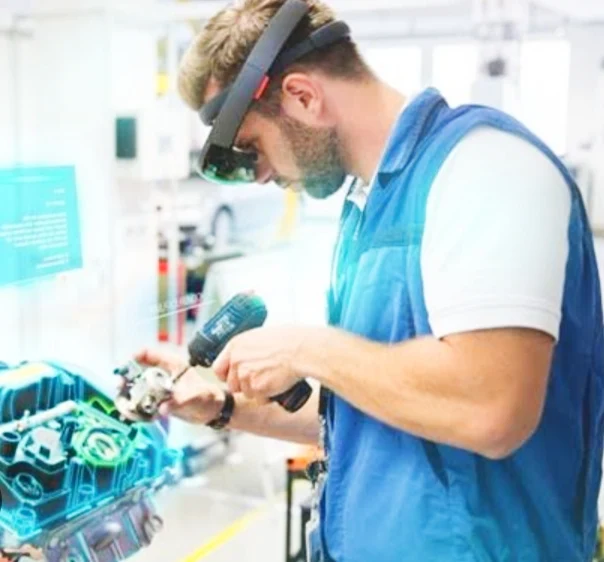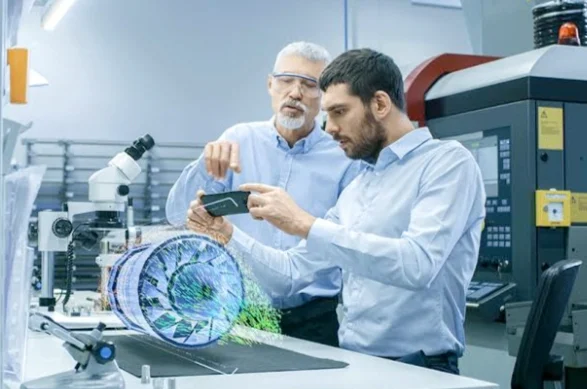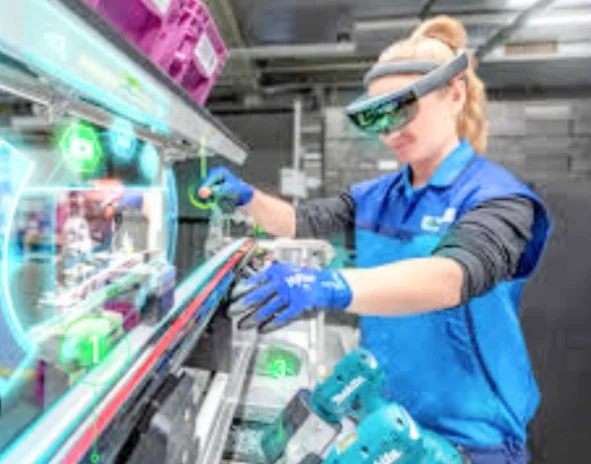BMW Revs Up Technician Training with Extended Reality (XR): A Historical Timeline
BMW's implementation of Extended Reality (XR) in technician training represents a significant leap forward in the automotive industry. To understand the evolution of this approach, let's explore a historical timeline of key milestones:
Table: Timeline of BMW's XR Technician Training
| Year | Milestone | Description |
|---|---|---|
| Pre-2010s | Traditional Training Methods | Technician training relied heavily on manuals, classroom lectures, and hands-on practice with physical vehicles. |
| Early 2010s | Emergence of VR Technology | VR technology begins to be explored for potential applications in various industries, including automotive training. |
| Mid-2010s | Pilot Programs with VR | BMW initiates pilot programs to test the feasibility and effectiveness of VR training for technicians. |
| Late 2010s | Introduction of AR | Augmented Reality (AR) emerges as a complementary technology to VR, offering real-world object overlays for enhanced training. |
| Early 2020s | Integration of XR Technologies | BMW integrates VR, AR, and potentially other XR technologies (e.g., 3D modeling) into a comprehensive XR training program. |
| Present Day (2024) | Ongoing Development and Refinement | BMW continues to develop and refine its XR training program, incorporating new technologies and best practices. |
Looking Ahead
The future of XR in technician training is bright. We can expect BMW and other manufacturers to push the boundaries of this technology, potentially leading to advancements such as:
- Standardized XR Training Programs across the automotive industry.
- Remote Collaboration in Real-Time using AR for specialist guidance during repairs.
- AI-powered Personalized Learning that tailors training difficulty and content to individual needs.
By embracing XR, BMW is setting a new standard for technician training, ensuring a skilled workforce prepared to maintain and service the increasingly complex vehicles of tomorrow.
BMW Revs Up Technician Training with Extended Reality (XR)
BMW is driving innovation into the future of automotive repair with the implementation of Extended Reality (XR) technology in its technician training programs. This cutting-edge approach promises a more immersive, interactive, and efficient learning experience for aspiring and current BMW technicians.
Table: Benefits of BMW's Technician Training with XR
| Benefit | Description |
|---|---|
| Enhanced Visualization | XR allows trainees to see complex components and systems in 3D, offering a deeper understanding of their functionality. |
| Interactive Learning | Technicians can manipulate virtual objects, perform procedures virtually, and troubleshoot issues in a safe, simulated environment. |
| Improved Knowledge Retention | The interactive nature of XR fosters better knowledge retention compared to traditional training methods. |
| Increased Efficiency | XR training can be tailored to individual needs, reducing overall training time and costs. |
| Remote Learning Opportunities | XR opens doors for geographically dispersed technicians to access training programs remotely. |
How XR Works in BMW Technician Training
The specific type of XR technology used in BMW's training program may vary, but it could encompass elements of both virtual reality (VR) and augmented reality (AR).
- VR could immerse trainees in a completely simulated workshop environment, allowing them to practice procedures on virtual BMW vehicles.
- AR could overlay digital information onto real-world objects, such as highlighting specific components on an actual BMW engine or providing step-by-step instructions during a repair process.
Overall Impact
By incorporating XR into its technician training, BMW is ensuring its workforce possesses the necessary skills and knowledge to maintain and repair its increasingly complex vehicles. This can lead to improved customer service experiences, faster repair times, and a more highly skilled technician workforce.
This technology is not only revolutionizing BMW's training programs but also paves the way for the future of automotive technician training across the industry.
BMW Revs Up Technician Training with Extended Reality (XR): A Look at the Tech Under the Hood
BMW is putting the pedal to the metal when it comes to technician training by incorporating Extended Reality (XR) technology. This innovative approach is transforming the way future and current BMW technicians learn, but what exactly are the technological building blocks that make this possible? Let's delve under the hood and explore the technologies driving this XR revolution.
Table: Technologies Powering BMW's XR Technician Training
| Technology | Description | Use Case in Training |
|---|---|---|
| Virtual Reality (VR) | Creates a fully immersive, computer-generated environment | Trainees can virtually step inside a simulated workshop and practice procedures on virtual BMW vehicles in a safe, controlled environment. |
| Augmented Reality (AR) | Overlays digital information onto the real world | AR glasses can project step-by-step instructions or highlight specific components on a real BMW engine, enhancing understanding during physical repairs. |
| 3D Modeling | Creates digital representations of real-world objects | Complex car parts and systems can be visualized in 3D, allowing trainees to explore them in detail and understand their functionality from any angle. |
| Haptic Technology | Simulates the sense of touch | VR gloves with haptic feedback can provide a sense of resistance when interacting with virtual objects, mimicking the feel of working on real car parts. |
| Artificial Intelligence (AI) | The power of machine learning | AI-powered training programs can personalize the learning experience, adapting to individual needs and progress. |
Beyond the Basics
While VR, AR, and 3D modeling are the core technologies, BMW's XR system likely integrates additional software and hardware to create a cohesive training experience. This could include:
- Motion Tracking Systems to monitor trainee movements and translate them into actions within the VR simulation.
- High-Performance Computers to render complex VR environments and AR overlays smoothly.
- Specialized Software designed specifically for XR training applications in the automotive industry.
The Future of XR in Technician Training
BMW's adoption of XR technology showcases the immense potential of this approach for the future of automotive technician training. As XR technology continues to evolve, we can expect to see even more innovative applications emerge, such as:
- Remote Collaboration with specialists using AR to provide real-time guidance during on-site repairs.
- Scenario-Based Training that simulates real-world challenges and malfunctions.
- Adaptive Learning Systems that adjust training difficulty based on trainee performance.
By embracing XR, BMW is not only ensuring its technicians have the skills to service increasingly complex vehicles but also paving the way for a future where technician training is more immersive, efficient, and engaging than ever before.
Frequently Asked Questions about BMW's XR Technician Training
BMW's Extended Reality (XR) technician training is a cutting-edge approach to educating and upskilling its workforce. By leveraging technologies like virtual reality (VR) and augmented reality (AR), BMW provides its technicians with immersive and interactive learning experiences.
General Questions
- What is XR? XR is a broad term encompassing technologies that enhance the real-world environment through computer-generated input. It includes VR, AR, and mixed reality (MR).
- Why is BMW using XR for technician training? XR offers a highly effective way to simulate real-world scenarios, allowing technicians to practice complex tasks in a safe and controlled environment without the risk of damage or injury.
- What are the benefits of XR training for BMW technicians? XR training can improve learning retention, reduce training costs, and enhance technician skills and confidence.
Specific XR Applications in BMW Training
- Virtual Reality (VR):
- Simulating complex repairs: Technicians can practice intricate procedures on virtual vehicles, gaining hands-on experience without the need for physical equipment.
- Safety training: VR can be used to simulate hazardous situations, teaching technicians how to respond safely and effectively.
- Augmented Reality (AR):
- Overlaying instructions: AR can project digital instructions directly onto real-world objects, guiding technicians through repair processes step-by-step.
- Troubleshooting assistance: AR can provide real-time assistance, highlighting potential issues or suggesting solutions.
Technical Considerations
- Hardware requirements: What kind of hardware (headsets, controllers) is needed for BMW's XR training?
- Software platforms: Which software platforms (e.g., Unity, Unreal Engine) are used to develop XR training experiences?
- Integration with existing systems: How is XR training integrated with BMW's existing training infrastructure and data management systems?
Future Trends and Challenges
- Advancements in XR technology: How might future advancements in XR technology (e.g., haptic feedback, eye tracking) enhance BMW's training programs?
- Addressing challenges: What are the potential challenges of implementing XR training, such as cost, accessibility, and technical difficulties?



